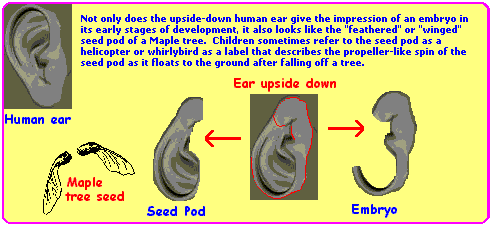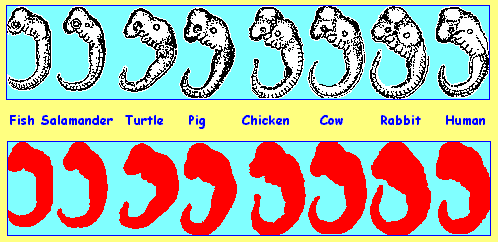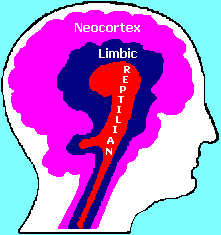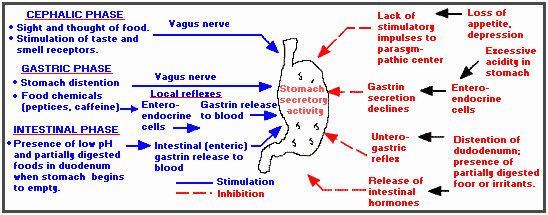page 6
(The Study of Threes)
http://threesology.org
Visitors as of 11/18/2019
| Pages in the Biological & Physiological 3s Series: | ||
| B/P 3s pg. 1 | B/P 3s pg. 2 | B/P 3s pg. 3 |
| B/P 3s pg. 4 | B/P 3s pg. 5 | B/P 3s pg. 6 |
| B/P 3s pg. 7 | B/P 3s pg. 8 | B/P 3s pg. 9 |
| B/P 3s pg. 10 | B/P 3s pg. 11 | The Devil's Advocate and 3s Research |
3 types of joint movement:
- The human knee performs one kind of movement (flexion/extension).
- The ankle performs two kinds of movement (flexion/extension & inversion/eversion).
- The ball-and-socket joints, such as the hip, allow three degrees of freedom.
- 3 types of joint categories: Fibrous ~ Cartilaginous ~ Synovial
- 3 types of joint movement: Immovable ~ Partly movable ~ Freely movable
- 3 between-finger triangular spaces for each hand.
- 3 stomach wall fiber layers: Longitudinal ~ Circular ~ Oblique
Triphasic sexual response nature:
- (Female): Desire ~ Lubrication & Swelling ~ Orgasm
- (Male): Desire ~ Erection ~ Ejaculation
- 3 stages of sexual behavior by sex "experts": Foreplay ~ Loveplay ~ Afterplay
- 3 immature "standards" of sexual behavior: Length of penis ~ Frequency of sex ~ Number of orgasms
- 3-part phrase of insecure, barbaric, egocentric men: Wam - Bam - Thank you ma'am
- 3 part phrase addressing young males: Young ~ Dumb ~ and full of Cum (sperm).
3-part motto attributed to British Special Air Services (SAS) Regiment (sometimes interpreted as a sexual connotation):
- 3 functions of human skeleton: Support ~ Protects organs ~ Movement (with muscles)
- 3 amino acids associated with organisms having a thyroid gland: Monoiodotyrosine ~ Diiodotyrosine ~ Triiodothyronine
- 3 skin layers: Epidermis ~ Dermis ~ Subcutaneous Tissue
- 3 burn degrees: 1st degree burn ~ 2nd degree burn ~ 3rd degree burn
- 3 muscles of the human nose: Procerus ~ Nasalis ~ Depressor septi
- 3 elevations (Concha) in the olfactory portion of the nose.
- 3 bones in the nose: Inferior Meatus ~ Middle Meatus ~ Superior Turbinate
- 3 system interaction for gonadal regulation: Hypothalamus ~ Anterior Pituitary ~ Gonads
- 3-letter mnemonic rule-of-thumb for First Aid: (A)irway ~ (B)reathing ~ (C)irculation
- 3-group sorting method during disasters to maximize number of survivors: Triage
- 3 lethal injection drugs (Used in Executions): Sodium Pentothal ~ Pancuronium Bromide ~ Potassium Chloride
- 3 sequences of kidney development: Pronephros ~ Mesonephros ~ Metanephros
- 3 main animal tissue fluids: Lymph ~ Cerebral Spinal ~ Milk
- 3 coats of the gall bladder: Serous ~ Fibromuscular ~ Mucous
- 3 lobes to the prostate gland.
1- 2- 3 bone arrangement:
- 3 bones = (fingers, toes)
- 2 bones = (ulna/radius, tibia/fibula)
- 1 bone (humerus, femur)
- 3 appendage joint divisions: (Shoulder ~ Elbow ~ Wrist)/(Hip~ Knee~ Ankle)
- 3 stages of bone development: Membranous ~ Cartilaginous ~ Osseous
- 3 types of cartilage: Fibro ~ Elastic ~ Hyaline
- 3 possible bone formation sites: Intramembranous ~ Endochondral ~ Heterotopic
- 3 bone layers: Concentric ~ Circumferential ~ Interstial
- 3 bone cell types: Osteoblasts ~ Osteocytes ~ Osteoclasts
- 3 sets of chromosomes in humans (presently) produces mutations such as Down's syndrome
- 3 sets of chromosomes in plants produces humanity's single most important food sources such as maize, wheat, barley, oats, rice and other cereals (Monocotyledonea plants)
It is a curious thing to note: "Alien" circles appear in fields of crops.
- 3 organs considered vital for life: Brain ~ Heart ~ Lungs
- 3 major classes of adrenal cortex hormones based on function: (Glucocorticoids) cortisol ~ (Mineralocorticoids) aldasterone ~ (Androgens) Sex steroid precursors
- 3 digestive enzymes: Glycerol esterhydrolase ~ Cholesterol esterase ~ Phospholipase A2
- 3 substances regulating HCL (gastric acid): Acetylcholine ~ Histamine ~
Gastrin
3 increased acid secretion phases in response to food: Cephalic~ Gastric~ Intestinal
3 to 1 sequence of ingested food (calories):
- From the (1) mouth
- to (2) the digestive tract
- to (3) the blood stream (and then into storage sites if the digested food is not needed at once for catabolic processes.)
- 3 glomerular capillary layers: Endothelium ~ Basement membrane ~ Podocytes/foot process
- 3 adrenal cortex zones: Outer (cortex) ~ Inner (medulla) ~ Outermost (zona glomerulosa)
- 3 input/output synapses (relations) classes: one-to-one, one-to-many, many-to-one
- 3 visceral cavities of humans: Skull ~ Thorax ~ Abdomen
- 3 basic fingerprint types: Loop ~ Whorl ~ Arch
As a humorous aside reference related to the 3 fingertip types, there are three different impressions that can be derived from looking at the human ear from a slightly uncommon perspective:
- Looks like the embryo of very many life forms.
- Looks like the seed pod of a Maple tree.
- Looks like the basic brain foundation of humans which includes the reptilian and spinal cord portions.
It should also be noted that some people view the outer ear as a type of fingerprint... (and is thus recorded in a photograph by police stations when an individual is "booked" into custody," -that is alternatively referred to in the United States as processing an individual with "three cards" of information on them.)
 |
 |

|
Note: I have curved the brain stem/spine as it would be with an embryo still in the womb, such as in the fetal position, as well as turning the "tail" the other way around in order to give an alternative view such as a child "riding" a stick horse.:
 |
 |
- 3 columns ("hollows") to the human penis cut transversely: Corpora Cavernosa ~ Corpus Spongiosum ~ Corpora Cavernosa
- 3 bands of the Colon: Teniae mesocolica ~ Teniae libera ~ Teniae omentalis
- 3 histochemical types of skeletal muscle fibers: Type I ~ Type IIB ~ Type IIA
- 3 types of taste bud groups on papillae: Circumvallate ~ Foliate ~ Fungiform (Papillae are small bumps on the tongue that contain taste buds.)
3 combined distinct bony areas in ancient fish, is where the bones of the human skull formed from:
- The bony internal braincase.
- A bony external surface armor.
- Bony gill bars.
- Simplistically speaking, there are 3 separate "S"-ensory organs + 1 T(S-ight~ S-ound- S-mell- Taste ) fused into 1 skull. (This is a 3 to 1 ratio.)
- 3 expansions of neural tube produce: Forebrain ~ Midbrain ~ Hindbrain
- 3 successive brain divisions: Hind/Midbrain ~ Limbic system ~ Cerebral cortex
- 3 brain and spinal cord layers: Pia Mater ~ Dura Mater ~ Arachnoid process
- 3 Spinal Cord white-matter columns: Dorsal Funiculus ~ Lateral Funiculus ~ Ventral Funiculus
- 3 pounds: common reference to the weight of the human brain.
- 3 pints: common reference to the capacity of the human brain case.
- 3 stages of brain development: Reptilian ~ Mammalian ~ Neo-mammalian
- 3 lobes on each Cerebellum hemisphere: Blocculondodular ~ Anterior ~ Posterior
- 3 divisions of autonomic neurons: Sympathetic ~ Parasympathetic ~ Enteric
- 3 major classes of endogenous opioid peptides: Enkephalins ~ Endorphins ~ Dynorphin
- 3 basic epithelial cell shapes: Squamous ~ Cuboidal ~ Columnar
- 3 heart layers: Endocardium ~ Myocardium ~ Pericardium
- 3 forms of stroke: Embolic ~ Hemorrhagic ~ Thrombotic
3 major steps are involved in the synthesis of thyroid hormones:
- Uptake and concentration of iodide within the gland.
- Oxidation and incorporation of the iodide into the phenol ring of tyrosine.
- Coupling of two iodinated tyrosine molecules to form either T4 or
T3
Tripeptide pyroglutamine ~ histadine ~ proline-amide (TRH: thyrotropin-releasing hormone) is synthesized in the hypothalamus.
- 3 axis Hypothalamic ~ Anterior pituitary ~ Gonadal function is the basis for gonadal regulation.
- 3 important nitrogenous waste compounds: Ammonia ~ Urea ~ Uric acid
- 3 Solid ~ Liquid ~ Gas products animals exude: Feces ~ Urine/Sweat ~ Oxygen/Carbon dioxide/Methane
- 3 gastrointestinal tract wall layers: Epithelium~ Lamina propria ~ Muscularis mucosae
- 3 gastric mucosa regions: Cardic glandular ~ Oxynti glandular ~ Pyloric glandular
- 3 parts of the small intestine: Duodenum ~ Jejunum ~ Ileum
- 3 types of (digestive tract) epithelial cell junctions: Tight ~ Desmosome ~ Gap
3 phases of Gastric motility:
-
Filling phase- is marked by the absence of gastric motility.
-
Mixing phase- is marked by repeated strong peristaltic waves of contraction of the tunica muscularis. These waves spread over the gastric wall from pylorus and back again, churning the food and mixing it with the gastric secretions to form a semi-liquid mass called chyme. Pacemaker smooth muscle cells control the frequency of these contractions, about a fairly constant three per minute.
-
Emptying phase- overlaps with the mixing phase. It is marked by the spurting of chyme into the small intestine that accompanies the brief, periodic relaxation of the pyloric sphincter.
http://www.healthsci.utas.edu.au/weller/+docs/digest3.htm
3 primary functions of the stomach:
- The bulk storage of ingested materials.
- The mechanical breakdown of resistant materials.
- The breaking of chemical bonds through the action of acids and enzymes.
3 parts to the stomach:
- Fundus- located to the left and superior opening of the esophagus.
- Body- is the central portion.
- Pylorus- the pylorus is the inferior part that connects to the small intestine.
- 3 major functions of the stomach: Motor ~ Secretory ~ Endocrine
- 3 separate pathways activate acid secretion: Neural ~ Hormonal ~ Paracrinal (local).
- 3 major chemical transmitter substances: Acetylcholine ~ Gastrin ~ Histamine.
- 3 separate receptors on the parietal cell are considered: Those for gastrin, acetylcholine and histamine.
3 to 1 consideration: The medications that inhibit acid secretion act either on the three receptors on the parietal cell or on the acid pump.
3 to 1 ratio: An antacid must be taken one and three hours after meals.
3 forms of vagotomy (division of the vagus nerve) are in vogue: truncal, selective and parietal cell.
3 components of early ôEarly dumpingö (occurs 10 to 20 minutes after meals): Gastrointestinal ~ Vasomotor ~ Cardiovascular. The patient may develop pain, nausea, vomiting, fullness and diarrhea after gastric surgery or vagotomy.
3 to 1 ratio: The ôlate dumpingö syndrome occurs 1 to 3 hours after meals, particularly meals containing large amounts of carbohydrate. & The late dumping syndrome is characterized by evidence of sympathetic discharge due to hypoglycemia.
- 3 main types of gastritis are recognized by histological examination: Superficial gastritis ~ Atrophic gastritis ~ Gastric atrophy.
- 3 times as likely to develop gastric cancer as the general population: Individuals with a parent or sibling with gastric cancer.
- 3 areas of involvement for gastric cancer: Antrum ~ Body ~ Cardia, with about equal frequency.
- 3 main macroscopic types of gastric cancer: Polypoid ~ Ulcerative ~ Infiltrative.
- 3 months of intensive medical therapy is given before surgery is recommended. This ensures that only benign gastric ulcers are treated medically.
Information adapted from:
http://www.canadianhp.com/english/Stomach_and_Duodenum.html

3 "convenient" pelvic fascia divisions: Piriformis ~ Obturator ~ Superior
3 columns (with 3 subdivisions) of the erector spinne (sacrospinalis) muscle mass:
- (Lateral column): Ilicostalis lumborum ~ lliocostalis thoracis ~ llicostalis cervicis;
- (Intermediate column): Longissimus thoracis ~ Longissimus cervicics ~ Longissimus capitis;
- (Medial column): Spinalis thoracis ~ Spinalis cervicis ~ Spinalis caphis
3 divisions to the transversospinalis muscle group:
- Semispinalis thoracis ~ Semispinalis Cervicis ~ Semispinalis capitis
- Multifidus muscles
- Rotatores thoracis ~ Rotatores cervicis ~ Rotatores lumborum
3 dimensions by which neuronal circuits can be characterized:
- The spatial domain- (Those areas of the brain or peripheral receptive fields that feed onto a given cell and those areas into which that cell sends its efferent signals.)
- The temporal domain- (The time spans over which the spatial signals are active>)
- The functional domain- (The mechanism by which the secreted transmitter substance operates on the receptive cell.)
3 parts to the parietal lobe of the brain: Postcentral gyrus ~ Superior parietal lobule ~ Inferior parietal lobule
3 parts of the brain: Prosencephalon (forebrain) ~ Mesencephalon (midbrain) ~ Rhombencephalon (hindbrain)
3 compositions of the peripheral nervous system: Spinal nerves ~ Cranial nerves ~ Certain parts of the autonomic nervous system.
3 classification systems derived from comparing
structures of various organisms:
3 frequently cited examples of vestigial structures in humans:
http://www.okstate.edu/artsci/zoo_home/zoo_lrc/1114www/evolutio/companat.htm |
3 types of toxic components from Smoking, particularly smoking of cigarettes:
- Nicotine- a chemical present in the tobacco.
- Carbon monoxide- a toxic gas, produced by the combustion of the cigarettes.
- Other toxic substances present in smoke and the accumulated effect of inhaling, over the years, by- products of tens or hundred of pounds of burned cigarette paper.
Trio of major diseases caused by smoking: Heart disease - Emphysema ~ Lung cancer
There is a 3-fold increase in the risk of developing adult diabetes due to smoking.
http://www.co.broward.fl.us/mei00250.htm
- 3 antigenic types of enteroviruses: Polioviruses 1, 2 and 3, can cause Polio infection.
- 3 years duration in a region free from any new cases of Poliomyelitis is considered to be free of polio transmission.
- 3 areas where the rates of poliomyelitis continue to range from 1 to 10 cases per 100,000 population: Parts of Africa, the Middle East, and Asia.
3 recommendations by the (Canadian) Committee to Advise on Tropical Medicine and Travel (CATMAT):
- Primary immunization of children and, if indicated, primary immunization of adults or a booster dose for adults is recommended in accordance with the recommendations of the National Advisory Committee on Immunization.
- Booster immunization against polio is not required for travel to the Americas.
- International travelers to other polio-endemic or epidemic regions of the world should be considered for a primary series or booster vaccination, depending upon an evaluation of their risk of exposure to the virus.
3 Categories for quality of evidence on which recommendations are made:
- Grade I- Evidence from at least one properly randomized, controlled trial.
- Grade II- Evidence from at least one well- designed clinical trial without randomization, from cohort or case-controlled analytic studies, preferably from more than one center, from multiple time series, or from dramatic results in uncontrolled experiments.
- Grade III- Evidence from
opinions of respected authorities on the basis of clinical experience,
descriptive studies, or reports of expert committees.
Note: Above information on Poliomyelitis was adapted from:
http://www.hc-sc.gc.ca/hpb/lcdc/publicat/ccdr/95vol21/dr2116ea.html
3 types of Usher Syndrome (a genetic disorder with hearing loss and retinitis pigmentosa which causes a progressive loss of vision):
- Born with a profound hearing loss, retinitis pigmentosa, and balance problems.
- Born with a moderate to severe hearing loss, retinitis pigmentosa, and no balance problems.
- Hearing loss that gets worse over time, retinitis pigmentosa, and may have balance problems.
http://www.lowvision.org/retinitis_pigmentosa.htm
3 to 1 ratio of the so-called four types of joints connecting the bone of the skeleton:
- 1 of 3 (movable)- Ball and socket joint. The ball and socket joints are the most free moving type of joints. They allow movement in any direction. This type of joint is found in the hip and shoulder.
- 2 of 3 (movable)- Hinge joint. The hinge joints can move up and down, but only in one direction. They operate like simple hinges. These are the joints at the knee, elbow, fingers and toes.
- 3 of 3 (movable)- Sliding joint. Sliding joints are those which allow small sliding movements between the bones, for example, the vertebrae of the backbone, allowing the back to bend.
- 1 of 1 (non-movable) Skull bone. The bones of the skull joints must be firm to protect the brain and therefore are fixed for life.
- 3 main parts to the male reproductive system: Penis ~ Testes ~ Vas deferens.
- 3 gaseous items taken in when we breathe: Mostly nitrogen ~ Some oxygen ~ Very little carbon dioxide.
- 3 things that happen to food by your teeth: Chopped ~ Torn ~ Ground down.
Information adapted from:
http://www.medguide.org.zm/translation/skelintro.htm
Triple-jointed lower jaw: threadsnakes (family Leptotyphlopidae) have a unique feeding mechanism in which the tooth-bearing elements of the lower jaw rotate synchronously in and out of the mouth, dragging prey into the esophagus. This process, which the authors call "mandibular raking," is the only vertebrate feeding mechanism known in which prey is transported exclusively by movements of the lower jaw.
http://www.chicagoherp.org/herpetol/sums0300.htm
3 major group divisions of modern mammals based on reproductive biology:
- Oviparous- (egg-laying); birds, fish, amphibians, reptiles, monotreme mammals, and invertebrates whose young develop in eggs outside of the maternal body.
- Viviparous- Metatheria (marsupials) giving birth to live young.
- Ovoviviparous- fish, amphibians, reptiles that produce eggs which hatch within the body of the parent and then are born alive.
3 characteristics distinguish mammals from other animals:
- Hair
- Mammary glands
- Three Inner ear bones (malleus, incus, stapes)
(Reptiles have one, but the reptilian jaw is a good conductor of sound.)
| Adaptability is a temperament characteristic that refers to the ease
with which an individual modifies behavior to adjust to changes in social
context. Hepburn, Rogers, Stone and Shub of the University of Colorado
Health Sciences Center in Denver hypothesized that low adaptability may be
an early manifestation of the restricted interests and strict adherence to
routines that distinguish autistic children from other developmentally
disordered children after age 3. http://www.vaccinationnews.com/DailyNews/December2001/FEATDailyNewsletter12-02-01c.htm |
3 types of Armed effector T (from the thymus)-cells:
- Cytotoxic T-cells respond to peptides derived from pathogens that multiply within the cytoplasm of the host cell. These peptides are presented in association with Class I MHC molecules to the CD8 cells. These CD8 cells, when activated, kill the infected target cell.
- Peptides derived from pathogens that multiply in intracellular vesicles, as well as those derived from ingested extracellular bacteria and bacterial products, are presented in association with class II MHC molecules and presented to the CD4 cells. These T-cells can differentiate into two types of armed effector T-cell. Those pathogens that replicate inside the intracellular vesicles tend to stimulate CD4 cells to differentiate into T H1 cells. TH1 cells activate the microbicidal properties of macrophages and induce B cells to make IgG antibodies that are good at opsonizing extracellular pathogens for uptake by phagocytes.
- Extracellular antigens, taken in to endocytic vesicles and subsequently presented to CD4 in the context of class II, tend to stimulate CD4 cells to differentiate into TH2 cells. TH2 cells primarily help the humoral immune response by activating naive antigen-specific B cells to produce IgM, initially, and later isotypes such as IgA and IgE and weakly opsonizing types of IgG.
http://www.bio.ilstu.edu/immunology/Laboratory%20Sessions/lab6.htm
Updated Posting (HTML maintenance): Sunday, 15th September 2019... 1:47 PM
Latest Update: Friday, February 24th, 2023... 11:31 AM
Herb O. Buckland
herbobuckland@hotmail.com